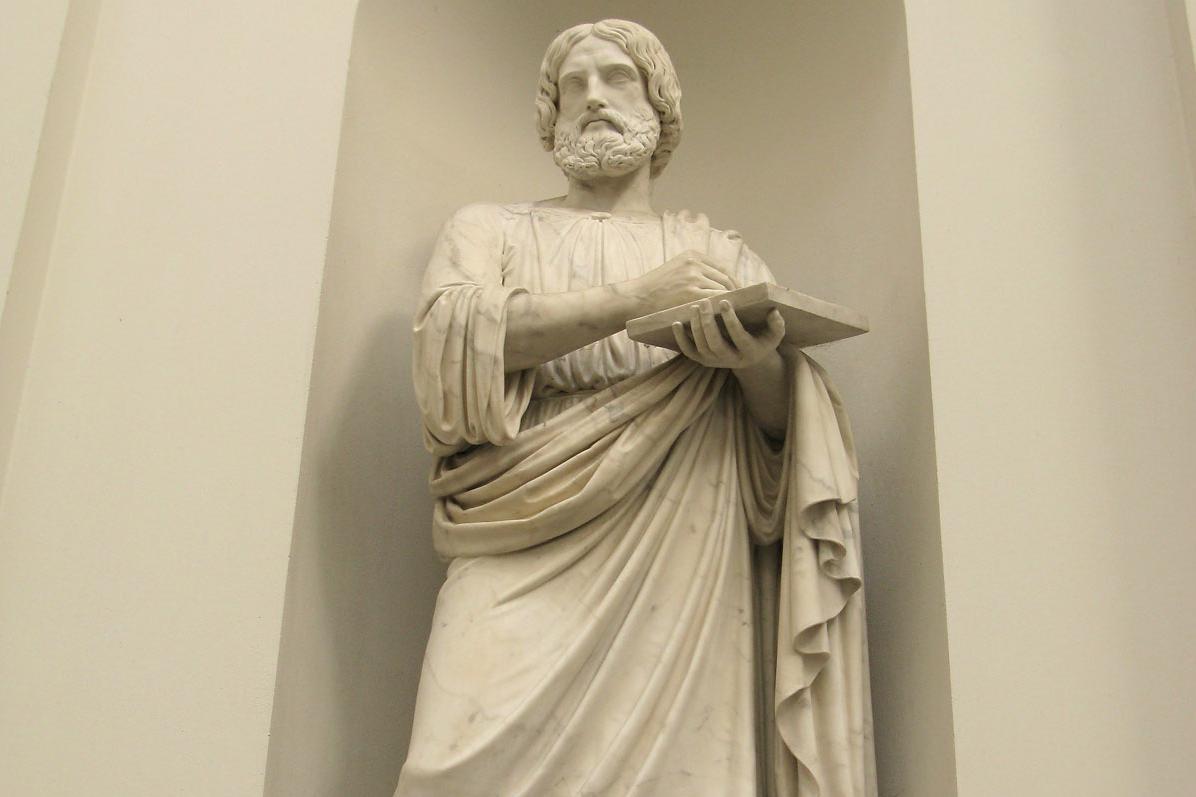DECORATIVE STATUES
The four evangelists are the only statues to adorn the chapel. The monumental figures captivate the viewer's eye. The king commissioned the four figures in 1822. They were designed by the two most important sculptors of the time: Johann Heinrich Dannecker (1758–1841) and Bertel Thorvaldsen (1770–1844). The statues were to be made of the finest material, so only Carrara marble would do.








